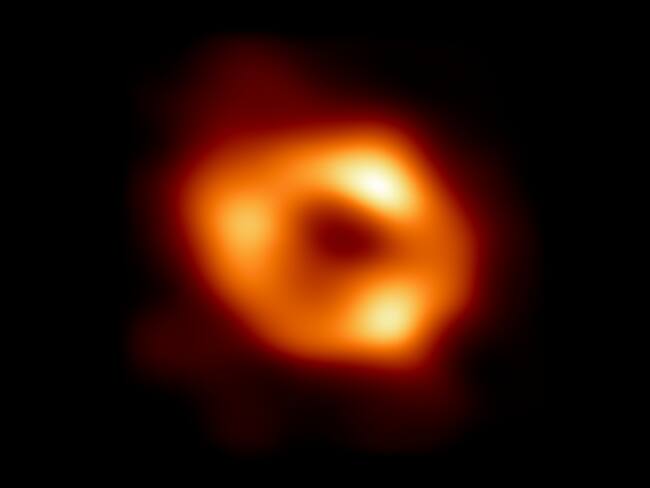Descubren un agujero negro muy cercano a la Tierra ¿qué se sabe?
Para descubrilo, se analizaron 168.065 estrellas. Los científicos no descartan que allí se puedan planetas en ese sistema dominado por GAIA BH1.

IN SPACE - MAY 12: In this handout photo provided by NASA, This is the first image of Sgr A*, the supermassive black hole at the centre of our galaxy, with an added black background to fit wider screens. It's the first direct visual evidence of the presence of this black hole. It was captured by the Event Horizon Telescope (EHT), an array which linked together eight existing radio observatories across the planet to form a single Earth-sized virtual telescope. The telescope is named after the event horizon, the boundary of the black hole beyond which no light can escape. The image of the Sgr A* black hole is an average of the different images the EHT Collaboration has extracted from its 2017 observations. In addition to other facilities, the EHT network of radio observatories that made this image possible includes the Atacama Large Millimeter/submillimeter Array (ALMA) and the Atacama Pathfinder EXperiment (APEX) in the Atacama Desert in Chile, co-owned and co-operated by ESO is a partner on behalf of its member states in Europe. (Photo by NASA Via Getty Images) / Handout
A través de datos del Observatorio Gaia de la Agencia Espacial Europea (ESA), un equipo de investigación descubrió el orbitamiento de una estrella similar al Sol, con características similares, sin embargo el grupo de científicos aseguró que se trata de un sistema binario, acompañado de un agujero negro.
Lea también: ¿Qué significan las luces azules en el cielo de México tras nuevo terremoto?
El estudio fue publicado en arXiv. En el, se destaca que este agujero negro está a una distancia aproximada de 1.500 años luz de la Tierra, está inactivo y solo acompaña a la estrella.
Todos los detalles del agujero negro serán publicados en la revista Monthly Notices of the Royal Astronomical Society.
Para descubrilo, se analizaron 168.065 estrellas. Los científicos no descartan que allí se puedan planetas en ese sistema dominado por GAIA BH1.
Gracias a este hallazgo, los científicos creen que en próximos estudios se podrán identificar docenas de sistemas similares.




